UberConference Alternatives
Need an UberConference alternative? This guide compares 10 options on features, pricing, and performance to help you find the right fit.

UberConference is a familiar tool for many, especially for quick and easy conference calls. It's known for its free plan, which offers a solid set of features for basic meetings. For simple, no-frills audio conferencing, it gets the job done without much fuss.
Despite its strengths, some users find limitations with call quality or need more features. We've analyzed the best alternatives based on G2 reviews, comparing their pros and cons to UberConference to help you shortlist your top options. Let's get started.
A Note On Digital Sales Workers: 11x
For those interested in digital workers for sales, 11x is a relevant option. The platform automates sales development tasks, which lets your team prioritize revenue-generating activities. It is a tool for augmenting your sales force.
11x is a go-to-market platform that uses AI agents to manage the sales process. An agent named Alice finds prospects, handles outreach on email and LinkedIn, and updates the CRM. Another agent, Julian, qualifies inbound leads and books meetings.
The platform combines functions for data enrichment, outreach, and email warmup. This consolidation means companies do not need separate point solutions for these tasks, which are common in many GTM stacks.
UberConference Alternatives
Below is a detailed review of UberConference alternatives. We compare each option's price, features, and its advantages and drawbacks relative to UberConference to inform your choice.
1) Zoom Meetings
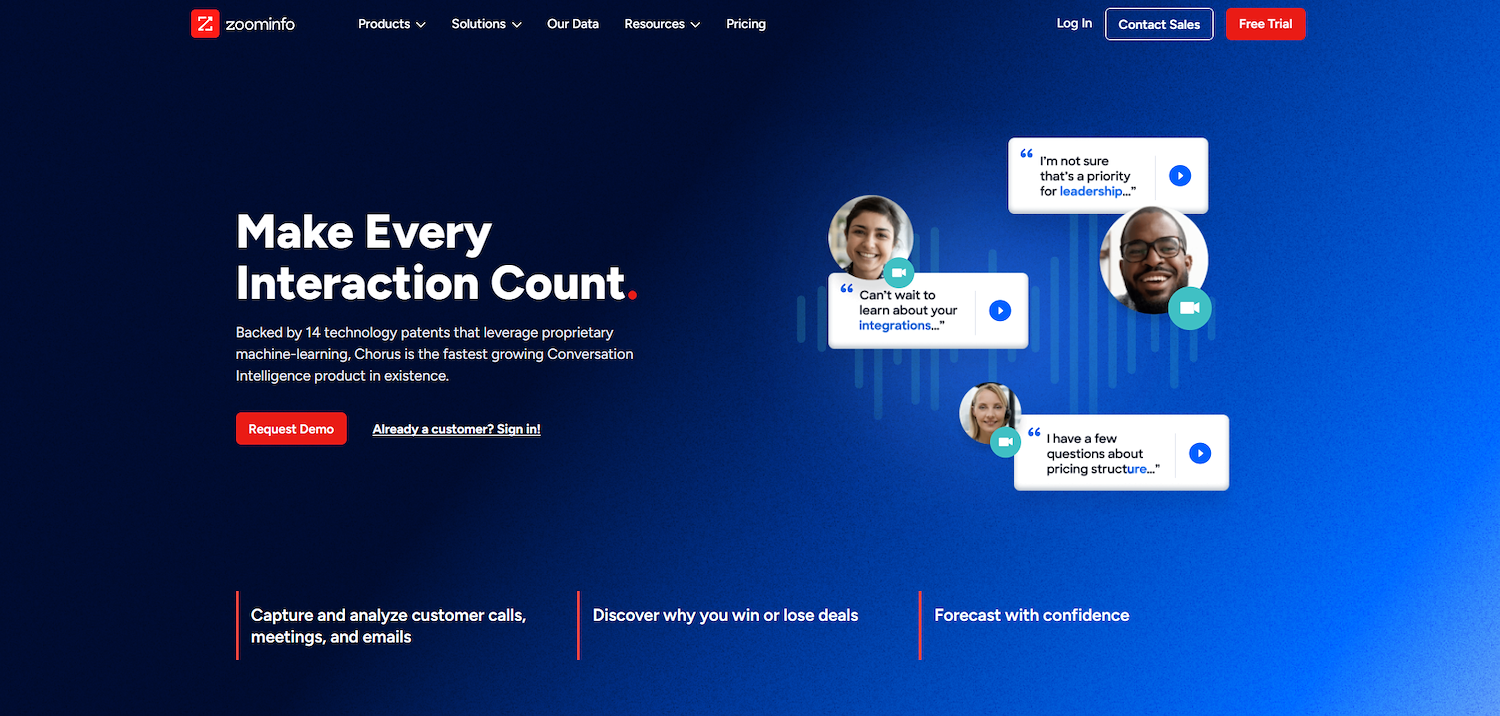
Zoom Meetings is a video communications platform for audio and video conferences. The software supports meetings with many participants. Common uses include team meetings, client presentations, and webinars.
The platform works across mobile devices, desktops, and dedicated room systems. It offers features for collaboration during calls.
Zoom Meetings's MainFeatures
- Includes collaboration tools for use during meetings.
- Operates on mobile devices, desktops, and dedicated room systems.
- Supports the hosting of webinars for large audiences.
- Allows for meetings with a large number of participants.
How Zoom Meetings Compares To UberConference
Average Review score: 4.5/5 stars based on 54,099 G2 reviews.
- Zoom Meetings provides video conferencing for a large number of participants. This differs from UberConference, which focuses primarily on audio calls.
- The platform includes collaboration features such as breakout rooms and a digital whiteboard. These tools allow for more interactive meetings than the simpler feature set of UberConference.
- Its recording function offers both local and cloud storage choices. This provides more flexibility for post-meeting use compared to UberConference's recording feature.
- The tool integrates with business applications like calendars and includes an AI Companion for meeting summaries, which are advanced capabilities that UberConference does not offer.
Drawbacks Of Zoom Meetings Vs. UberConference
- Zoom Meetings has a large number of features, which can be complex for users who only need simple audio calls. This is different from UberConference's simple and direct interface.
- The tool focuses on video, so it requires more internet bandwidth. Some users with slow connections might face lag, which is less common with an audio-first tool like UberConference.
- For teams that only need basic audio conferencing, the cost of Zoom's paid plans may not be justified. UberConference provides a more focused solution for this specific use case.
Pricing and Cost-Effectiveness
Both platforms provide a free plan for basic conferencing needs. For paid options, Zoom's Pro plan is $15.99 per host per month, which is comparable to the $15 per user per month for Dialpad's Standard plan that includes UberConference features.
2) Microsoft Teams
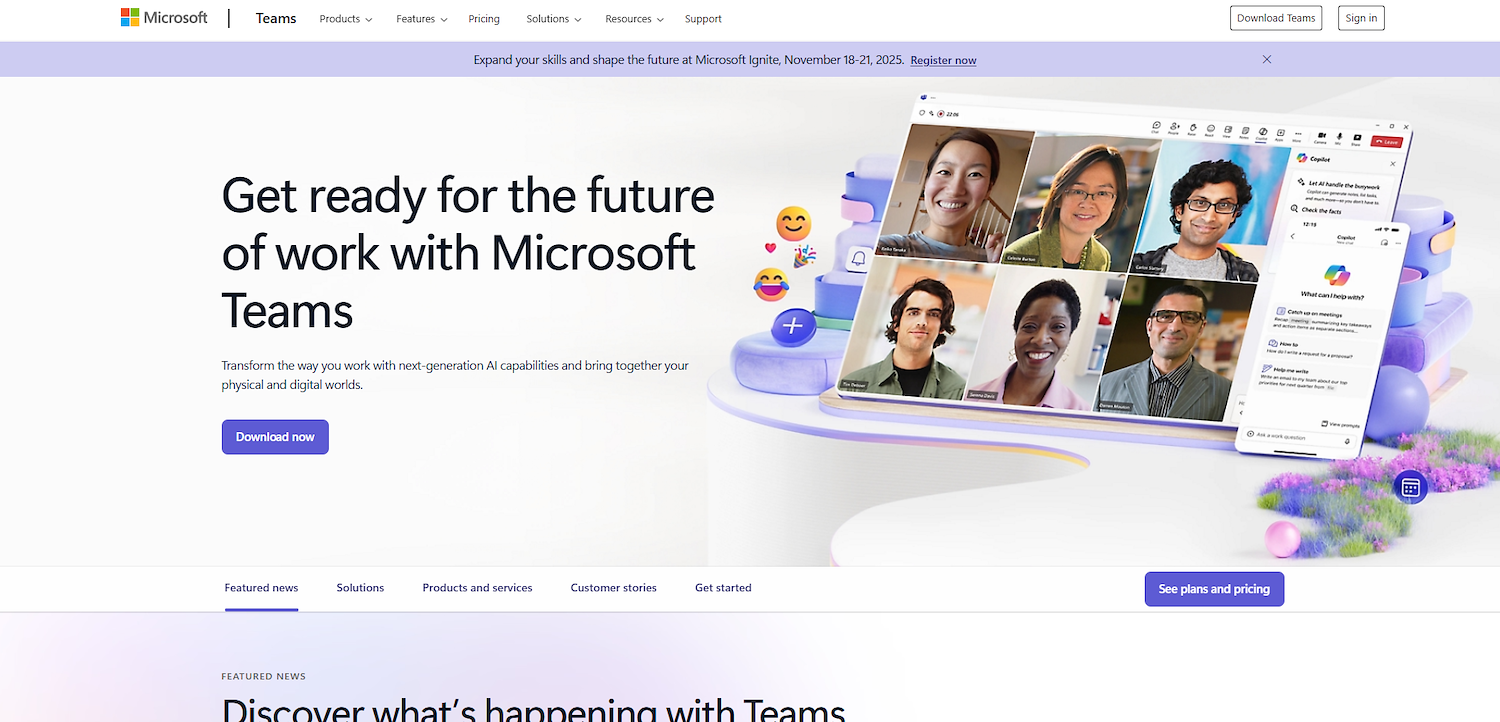
Microsoft Teams is a unified communications platform from Microsoft. It combines chat, meetings, and calls into one application. The service supports remote and hybrid meetings, webinars, and can function as a cloud telephony replacement for desk phones. It uses AI for tasks like meeting notes and summaries.
The platform is available as part of Microsoft 365 plans or as a stand-alone solution with desktop, web, and mobile apps.
Microsoft Teams's Main Features
- Integrates persistent chat, channels, and file sharing for team collaboration.
- Uses AI for meeting transcriptions, notes, and intelligent recaps.
- Provides native cloud calling with PBX and contact-center integrations.
- Supports interactive meetings with tools like PowerPoint Live and Microsoft Whiteboard.
How Microsoft Teams Compares To UberConference
Average Review score: 4.4/5 stars based on 16,350 G2 reviews.
- Microsoft Teams combines chat, file sharing, and meetings in a single application. This provides a more unified workspace compared to UberConference's focus on audio calls.
- It uses AI to generate meeting notes and transcripts automatically. This feature for post-meeting review is not available in UberConference.
- The platform offers advanced video conferencing with interactive tools like Microsoft Whiteboard. This allows for more dynamic collaboration than the audio-centric meetings of UberConference.
- This tool provides native cloud calling features, which can replace a traditional phone system. UberConference does not offer this level of telephony integration.
Drawbacks Of Microsoft Teams Vs. UberConference
- Microsoft Teams includes many features, which can make it complex for users who just need simple audio calls. UberConference has a more direct interface for this purpose.
- Some users report the application is heavy on system resources, which might cause slow performance on certain computers. This is less common with an audio-first tool like UberConference.
- The platform's design as a full collaboration suite means the process for a simple audio call is less prominent. UberConference provides a more focused and immediate experience for dial-in meetings.
Pricing and Cost-Effectiveness
Microsoft Teams Essentials is priced at $4.80 per user per month, offering a more cost-effective option than the Dialpad Standard plan, which includes UberConference features for $15 per user per month. This makes Teams a lower-cost entry for a full collaboration suite. For detailed pricing, check the Microsoft Teams's official website.
3) Google Meet
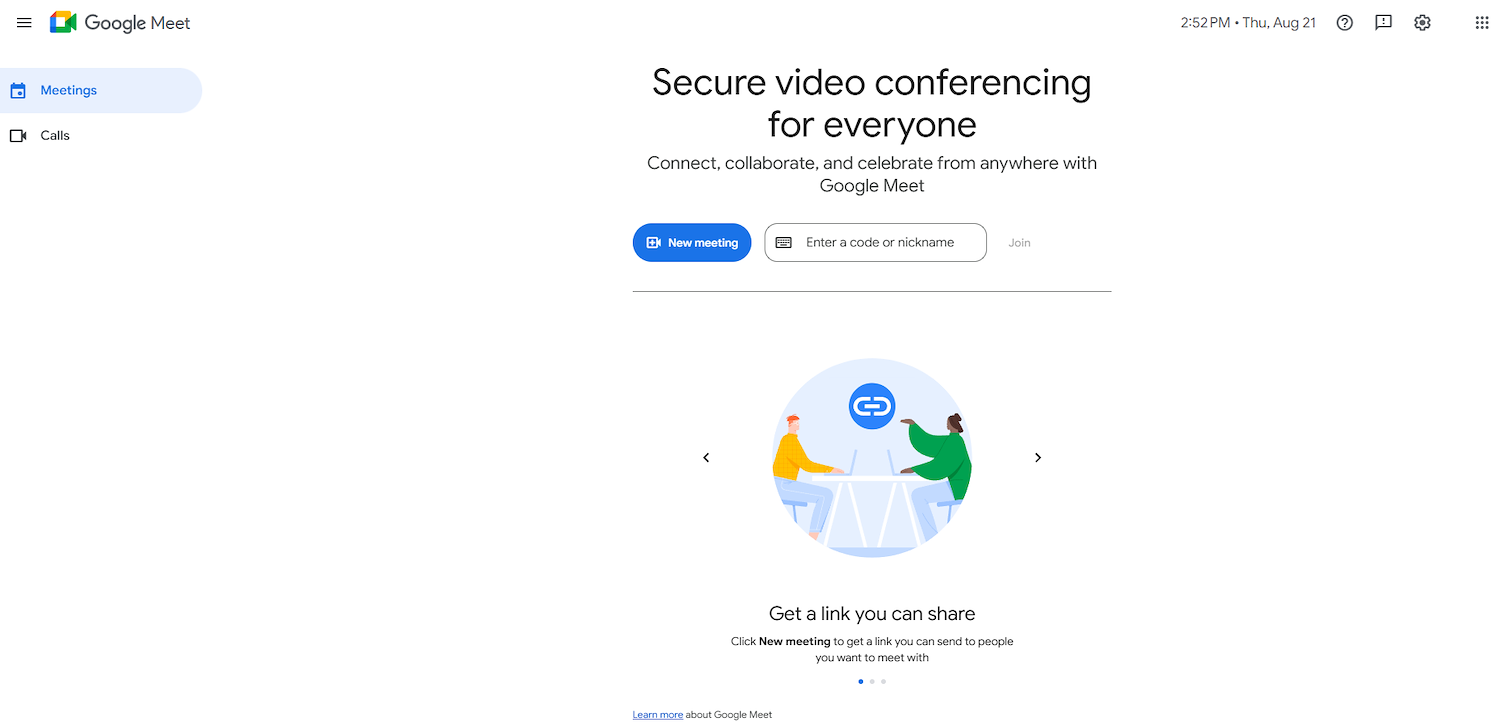
Google Meet is a video communication service from Google. It provides secure video meetings for businesses and individuals. The service works in web browsers and on mobile devices, which means desktop users need no software installation. It integrates with the Google Workspace platform for scheduling and notifications.
Google Meet's Main Features
- Functions directly within web browsers, which removes the need for participants to install any desktop software.
- Integrates with Google Workspace to schedule meetings and send invitations directly from Google Calendar.
- Encrypts all meeting data in transit by default to ensure the security of communications.
- Offers real-time, automated live captions during meetings to improve accessibility for all participants.
How Google Meet Compares To UberConference
Average Review score: 4.6/5 stars based on 3,022 G2 reviews.
- Google Meet integrates with Google Workspace, which allows scheduling directly from Google Calendar. This provides a more unified workflow for users within that ecosystem than UberConference offers.
- The platform provides real-time captions during live meetings to improve accessibility. This is a feature that is different from the post-meeting transcriptions available with UberConference.
- It operates fully within a web browser, which means participants do not need to install any software. This can simplify the process of joining a meeting compared to UberConference, which also has a dedicated application.
- The service includes AI features on paid plans, such as an assistant that takes notes. This offers a form of automated meeting summary that is distinct from UberConference's core features.
Drawbacks Of Google Meet Vs. UberConference
- Google Meet is a video-first platform, so some users find it requires more steps for a simple audio call compared to the direct audio focus of UberConference.
- The tool's emphasis on video may require more internet bandwidth. Users with slower connections might face quality issues, which is less common with an audio-centric service like UberConference.
- It does not include a custom hold music feature. This is different from UberConference, which offers this unique option for participants who are waiting for a meeting to start.
Pricing and Cost-Effectiveness
The Dialpad Standard plan, which includes UberConference features, costs $15 per user per month. While we've covered key features and use cases in this comparison, pricing models can vary significantly between tools. For the most accurate and up-to-date pricing information, we recommend visiting Google Meet's official website.
4) GoTo Meeting

GoTo Meeting is a professional online meeting software for secure virtual collaboration. The platform provides HD video, screen share capabilities, and audio conferences with toll-free number options.
Businesses of all sizes use it for internal team meetings, client presentations, sales demonstrations, and corporate training sessions.
GoTo Meeting's Main Features
- It provides advanced audio features, including background noise suppression, a commuter mode, and toll-free numbers in over 50 countries.
- The platform includes security options such as AES-256 encryption, meeting locks, and password-protected sessions.
- It offers collaboration tools like screen sharing, annotation features, and the ability to share keyboard and mouse control.
- The software provides a centralized admin dashboard for managing all GoTo products from a single console.
How GoTo Meeting Compares To UberConference
Average Review score: 4.2/5 stars based on 13,391 G2 reviews.
- GoTo Meeting provides advanced audio features like background noise suppression. This results in clearer call quality in various environments, a feature not standard in UberConference.
- The platform includes enhanced security options such as meeting locks and password protection. These tools give hosts more control over meeting access compared to UberConference's basic settings.
- It offers interactive tools like screen annotation and remote mouse control during screen sharing. This allows for more dynamic collaboration than the simpler screen share function in UberConference.
- A central admin dashboard allows for managing users and settings across the organization. This simplifies administration for businesses, a capability that UberConference does not provide.
Drawbacks Of GoTo Meeting Vs. UberConference
- GoTo Meeting's interface can feel complex for users who only need basic audio calls. Some reviews note it is less intuitive compared to the simple, direct design of UberConference for starting a quick meeting.
- The platform's pricing begins with paid plans, which differs from UberConference's popular free tier. This makes UberConference a more accessible option for teams that need basic audio conferencing without a subscription.
- It lacks the custom hold music feature found in UberConference. This unique option provides a more branded waiting experience for participants, a small detail not available in GoTo Meeting.
Pricing and Cost-Effectiveness
GoTo Meeting offers a Professional plan at $12 per month, a lower starting price than the $15 per user per month for Dialpad's Standard plan with UberConference features. Its Business plan is $16 per month, comparable to the Dialpad plan.
5) Webex Meetings
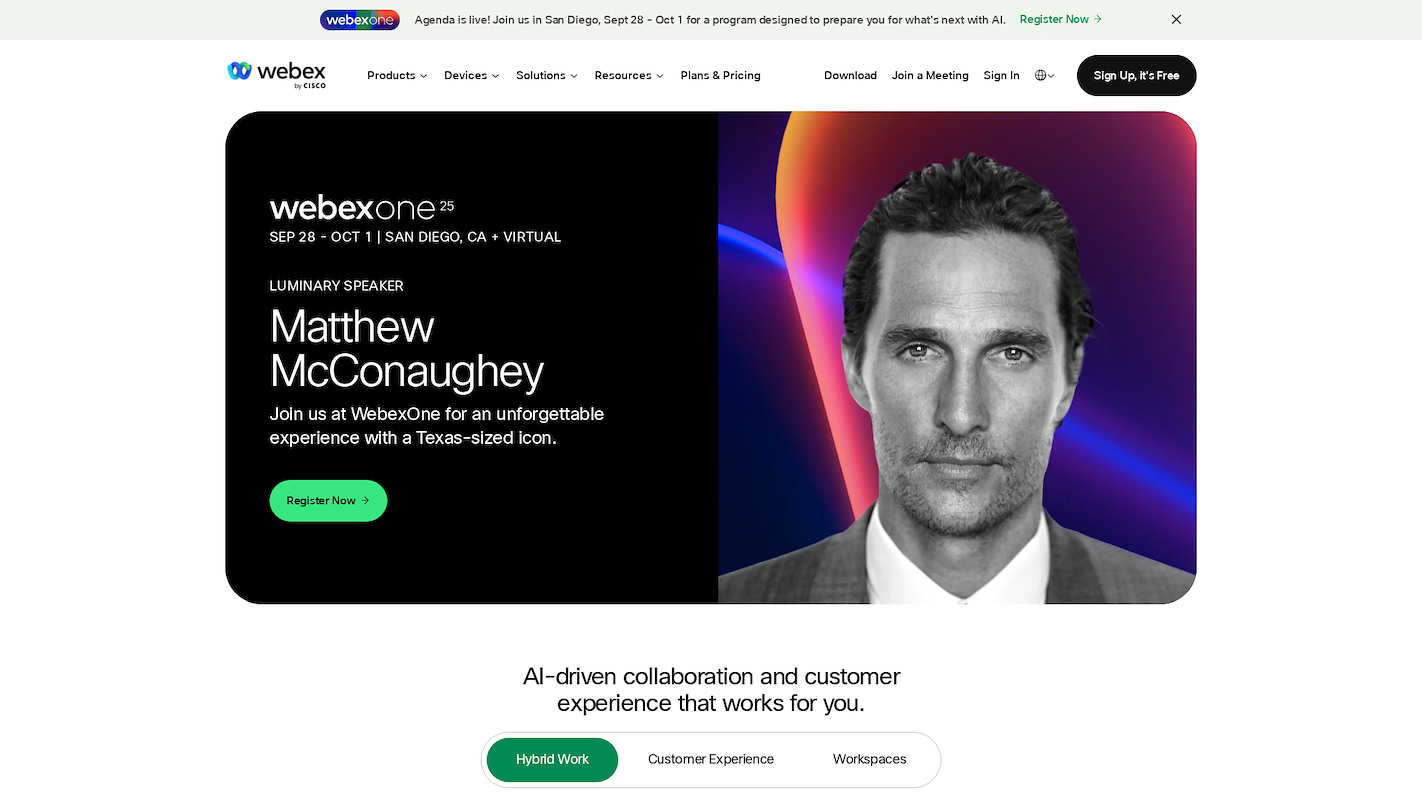
Webex Meetings is a secure platform from Cisco for video conferences and team collaboration. It provides HD video, audio calls, and screen share capabilities. Businesses use the service for a range of communication needs, from one-on-one discussions to large virtual events and webinars for global audiences.
Webex Meetings's Main Features
- Includes an AI Assistant that generates meeting summaries and removes background noise.
- Provides integrated collaboration tools such as polling, Q&A, quizzes, and whiteboarding.
- Offers unified IT administration through Control Hub, which includes performance insights.
- Features built-in capabilities for hosting webinars and large-scale virtual events.
How Webex Meetings Compares To UberConference
Average Review score: 4.2/5 stars based on 18,405 G2 reviews.
- Webex Meetings includes an AI Assistant that generates meeting summaries and removes background noise, offering a different kind of support than UberConference's post-meeting transcriptions.
- The platform provides interactive tools like polling, Q&A, and digital whiteboarding, which allow for more engagement than the basic screen sharing in UberConference.
- A central management console gives IT teams control over users and settings across the organization, a feature for administrative oversight that UberConference does not have.
- This tool has built-in capabilities to host large webinars and virtual events, which supports communication on a larger scale than UberConference's meeting-focused design.
Drawbacks Of Webex Meetings Vs. UberConference
- Webex Meetings has a comprehensive feature set that some users find complex for simple audio calls, unlike the more direct interface of UberConference.
- The application can sometimes be resource-intensive, which might lead to performance issues on certain devices, a less frequent concern for an audio-focused tool like UberConference.
- It does not offer a custom hold music feature, which is a unique option in UberConference for creating a branded waiting experience for participants.
Pricing and Cost-Effectiveness
Both platforms offer a free plan for basic use. For paid features, Webex's Meet plan is priced at $13.50 per user per month. This is slightly lower than the Dialpad Standard plan, which includes UberConference features for $15 per user per month, making Webex a more cost-effective starting point for paid plans.
Consider 11x for Your Sales Team
If your company seeks to augment its sales force, consider the 11x platform. Its digital workers manage prospect outreach and lead qualification. This allows your sales team to concentrate on deal closure and revenue-focused tasks. Evaluate 11x to see its fit within your GTM strategy.
With 11x, AI agents run your sales playbook. The agent Alice finds accounts and drives outreach, while Julian qualifies inbound prospects and sets meetings. This single platform handles data, outreach, and warmup, removing the need for separate tools in your GTM stack.
Book a demo to see the platform in action.
6) BlueJeans Meetings
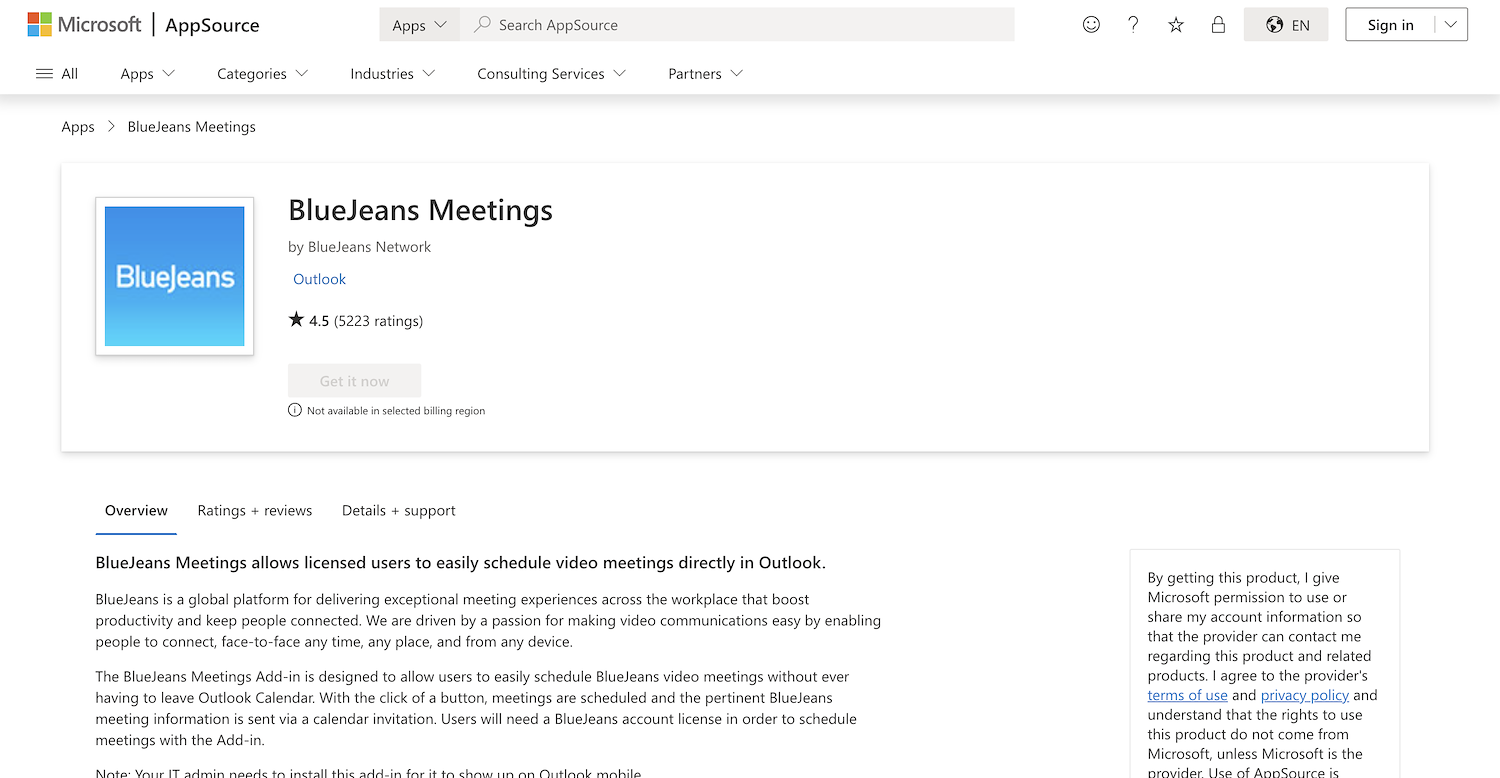
BlueJeans Meetings is a video conference platform for business communication. It provides features like Dolby Voice audio and works on desktop, mobile, and room systems. The platform is designed for a simple user experience.
Common uses include all-hands events, webinars, and sessions for team instruction. The service can host large events for up to 50,000 attendees and offers breakout sessions for collaborative work.
BlueJeans Meetings's Main Features
- Provides Dolby Voice audio for clear sound quality during meetings.
- Supports large-scale events and webinars for up to 50,000 attendees.
- Offers breakout sessions for smaller group collaboration within a larger meeting.
- Operates across desktop, mobile, and dedicated room systems for flexible access.
How BlueJeans Meetings Compares To UberConference
Average Review score: 4.3/5 stars based on 5,198 G2 reviews.
- BlueJeans Meetings provides Dolby Voice audio for enhanced sound clarity, a different approach to audio quality compared to the standard features of UberConference.
- The platform supports large-scale events for many attendees, a capability for large audiences that is different from UberConference's design for smaller group calls.
- It offers breakout sessions to create smaller group discussions within a larger meeting. This collaboration tool is a feature that UberConference does not have.
- This tool integrates with dedicated conference room systems, which provides a hardware-based meeting option not available with UberConference's software-focused approach.
Drawbacks Of BlueJeans Meetings Vs. UberConference
- Reports suggest its parent company may discontinue the service. This creates long-term uncertainty for new adopters, unlike UberConference, which is an active part of the Dialpad product suite.
- The tool lacks a custom hold music feature. This is different from UberConference, which provides this option to create a branded experience for participants who wait for a meeting to start.
- Its interface, designed for video meetings, can feel complex for simple audio-only calls. UberConference offers a more direct user experience for users who only need basic audio conferencing.
Pricing and Cost-Effectiveness
Both platforms provide a free plan. BlueJeans' paid plans start at $9.99 per month, offering a lower entry point than the $15 per user per month for the Dialpad Standard plan that includes UberConference. The BlueJeans Pro plan is $13.99, also priced below the comparable Dialpad offering.
7) RingCentral Video

RingCentral Video is a unified communication platform that combines video meetings, team messaging, and a business phone system. It provides a single application for various business communication needs.
Companies use it for internal collaboration, client calls, and virtual events. The service operates on desktops and mobile devices to support hybrid work environments.
RingCentral Video's Main Features
- Offers a video collaboration portfolio for meetings, rooms, town halls, webinars, and large-scale events.
- Uses AI to power engagement features and provide automated recaps and summaries.
- Integrates with over 300 pre-built applications and provides open APIs for custom workflows.
- Provides 99.999% uptime and holds certifications for security frameworks like SOC 2 and HIPAA.
How RingCentral Video Compares To UberConference
Average Review score: 4.1/5 stars based on 392 G2 reviews.
- RingCentral Video provides AI-generated call summaries for a quick overview of meetings. This offers a different kind of post-meeting asset compared to the full transcriptions available in UberConference.
- The platform integrates team messaging and file sharing with its meeting functions. This provides a unified workspace, which is different from UberConference's design as a dedicated meeting tool.
- It offers over 300 pre-built integrations for custom workflows. This provides more extensive connectivity to other business applications compared to UberConference.
- This tool includes AI-powered language translation during meetings. This feature supports communication for global teams, an option not present in UberConference.
Drawbacks Of RingCentral Video Vs. UberConference
- RingCentral Video is a unified platform with many features. Some users find this complex for a simple audio call, which is different from the direct and focused interface of UberConference.
- The tool does not have a custom hold music feature. This is a unique option in UberConference that provides a branded waiting experience for meeting participants.
- Some reviews note a learning curve with the application. This contrasts with UberConference, which is generally known for its simple setup and ease of use for joining calls quickly.
Pricing and Cost-Effectiveness
Both platforms offer a free plan. RingCentral Video provides paid tiers starting at $5 per user per month, making it a more cost-effective option than the Dialpad Standard plan, which includes UberConference features for $15 per user per month.
8) Whereby

Whereby is a video conference tool that works in a web browser. Users create custom conference rooms with permanent links. The service provides simple access, so guests join calls without a download or login requirement.
Common applications include client consultations, telehealth sessions, and team collaboration. The platform supports one-on-one and group calls.
Whereby's Main Features
- Operates directly in a web browser, which allows guests to join meetings without downloads or logins.
- Provides custom branding options and memorable room URLs for a personalized meeting experience.
- Includes collaboration tools such as breakout groups, virtual whiteboarding, and screen sharing.
- Offers an API to embed and customize the video call function directly into a website or application.
How Whereby Compares To UberConference
Average Review score: 4.6/5 stars based on 1,129 G2 reviews.
- Whereby provides an API to embed video calls directly into a website or application. This offers a level of integration that UberConference, as a standalone meeting tool, does not provide.
- The platform allows for custom branding and memorable room URLs. This creates a more personalized meeting experience than UberConference's standard interface and hold music customization.
- It offers a simple guest experience where participants join directly from a browser without downloads or logins. While UberConference also has a browser option, Whereby's model is built around this for maximum simplicity.
- This tool includes collaboration tools like virtual whiteboarding and breakout groups. These features support more interactive sessions compared to the audio-focused and basic screen sharing functions of UberConference.
Drawbacks Of Whereby Vs. UberConference
- Whereby does not offer a custom hold music feature. This is different from UberConference, which allows hosts to create a branded waiting experience for participants before a meeting starts.
- The tool does not provide post-meeting transcriptions. This contrasts with UberConference, which offers this feature for users who need a written record of their discussions for review or documentation.
- Some users find its video-first design less direct for simple audio-only calls. UberConference, with its focus on audio conferencing, provides a more immediate experience for users who primarily need dial-in meetings.
Pricing and Cost-Effectiveness
Both platforms offer a free plan. Whereby's paid Meetings Pro plan is $8.99 per month, a lower starting price than the $15 per user per month for the Dialpad Standard plan that includes UberConference features. This makes Whereby a more cost-effective option for teams seeking paid features.
9) Jitsi Meet
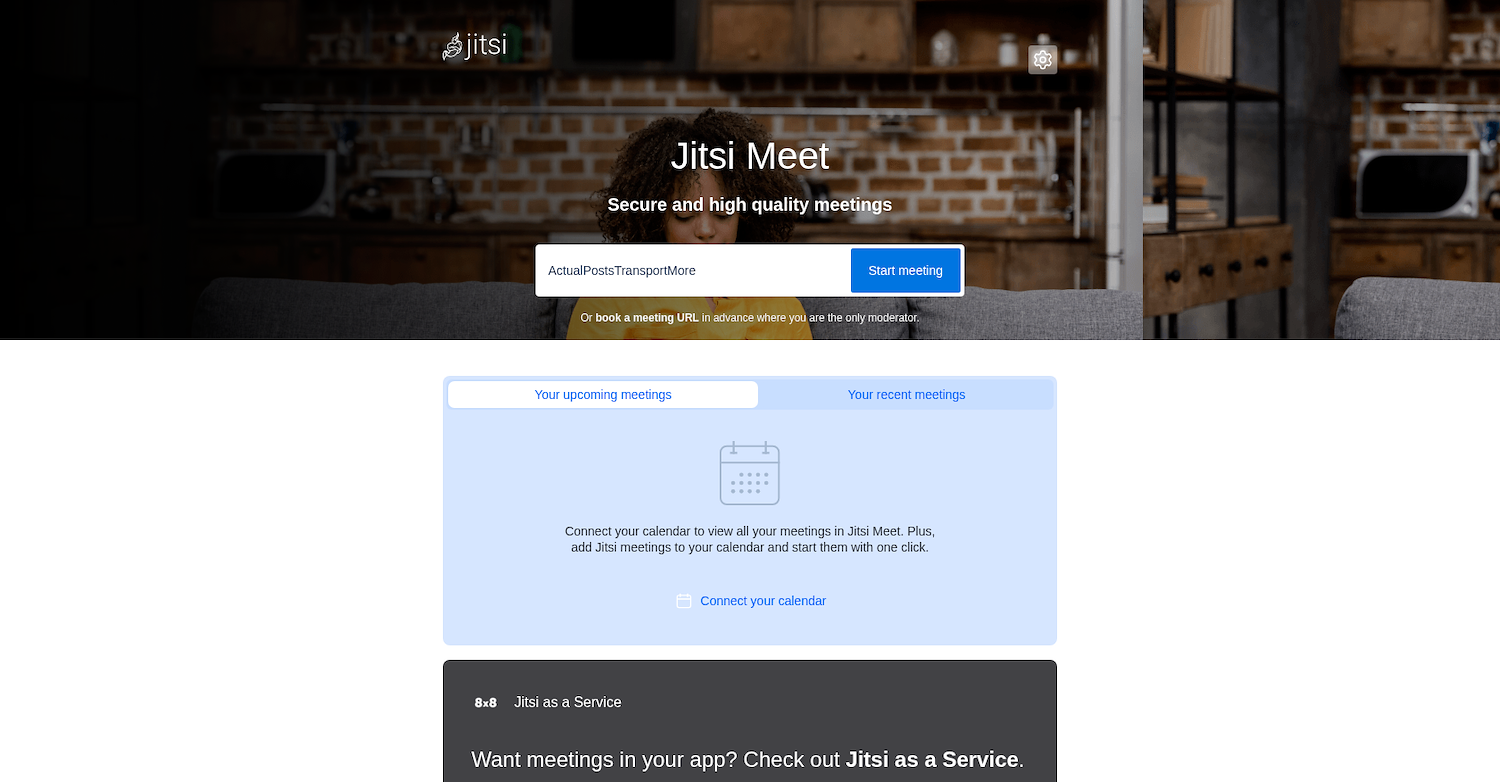
Jitsi Meet is an open-source video conference service that works in a browser, with no account required. As a collection of projects, it allows for self-host options, which gives companies full data control. People use it for team meetings, virtual classes, and community events.
Jitsi Meet's Main Features
- Allows for self-hosting and customization as an open-source platform for full data control.
- Works in a browser with no account or software installation required to join a meeting.
- Provides end-to-end encryption for all video and audio calls to ensure privacy.
- Supports an unlimited number of participants, with performance dependent on server capacity.
How Jitsi Meet Compares To UberConference
Average Review score: 4.3/5 stars based on 181 G2 reviews.
- As an open-source platform, Jitsi Meet allows for self-hosting. This gives companies full control over their data, unlike the cloud-only service of UberConference.
- The tool allows participants to join meetings without an account. This provides a more direct entry into a call compared to UberConference, which requires host accounts and has a more structured joining process.
- It supports an unlimited number of participants, with performance dependent on server capacity. This differs from UberConference, which has fixed limits on the number of attendees per call.
- The platform provides end-to-end encryption for all calls by default. This offers a higher level of privacy for communications compared to the standard security protocols used by UberConference.
Drawbacks Of Jitsi Meet Vs. UberConference
- Jitsi Meet does not offer custom hold music. This is different from UberConference, which allows hosts to select music for a branded waiting experience before a meeting begins.
- The tool lacks a built-in feature for post-meeting transcriptions. UberConference provides this service, which gives users a written record of their discussions for later review.
- As an open-source platform, it does not include dedicated customer support. This contrasts with UberConference, which is part of a commercial product suite and offers direct support channels for users who face issues.
- Some users may find its video-first interface less direct for simple audio-only calls. UberConference is designed with a primary focus on audio conferencing, which can make starting a quick call more straightforward.
Pricing and Cost-Effectiveness
Jitsi Meet is free as an open-source project, though self-hosting or commercial support can have associated costs. UberConference provides a free plan, but its paid features are part of the Dialpad Standard plan, which starts at $15 per user per month. This makes Jitsi a no-cost option for teams that do not need a commercially supported product.
10) Lifesize
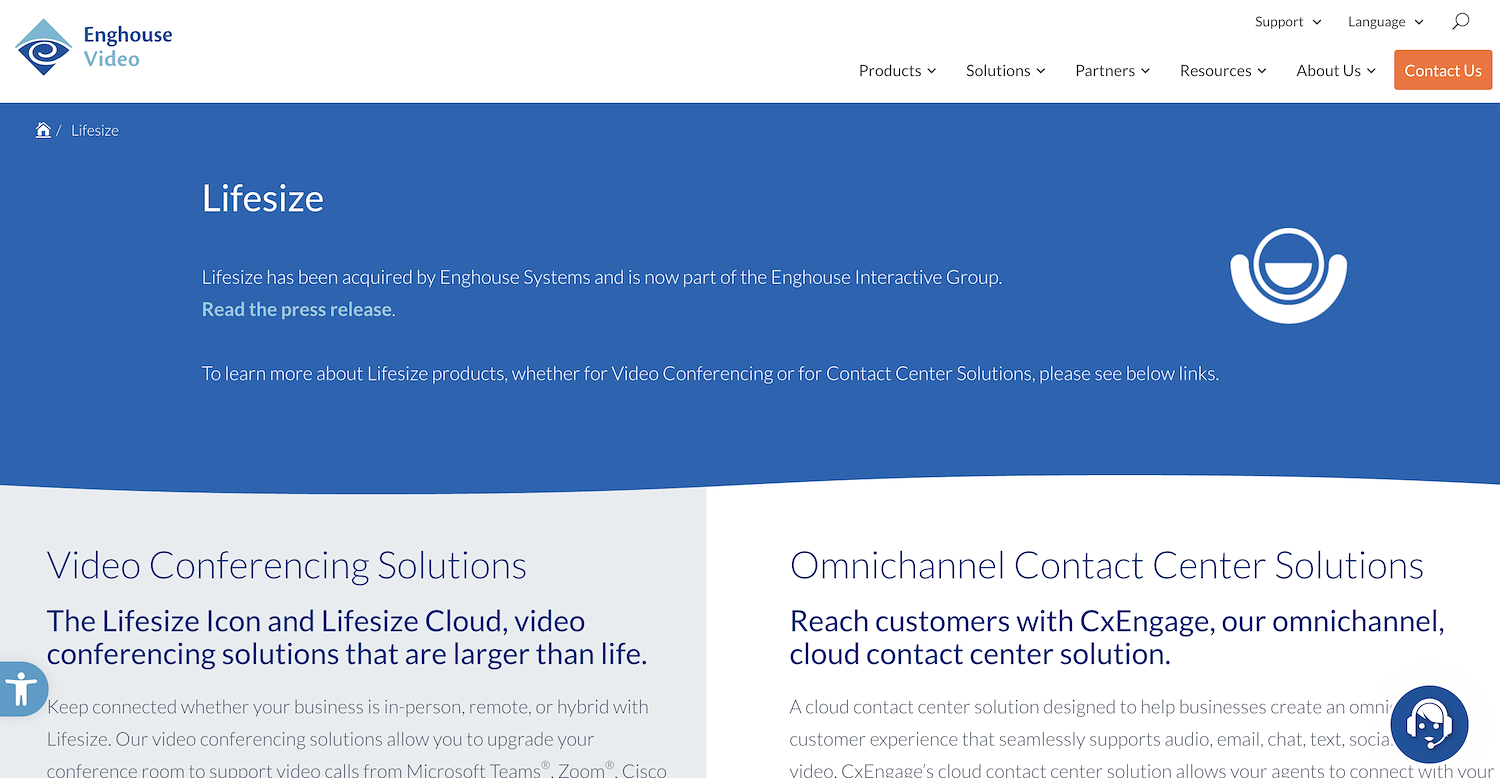
Lifesize is a video conference service that pairs a cloud platform with integrated meeting room hardware. It delivers high-definition video for enterprise communication and collaboration. The service is now part of the Enghouse Vidyo portfolio, a factor for companies to consider.
Lifesize's Main Features
- Integrates with both proprietary and bring-your-own hardware systems.
- Supports multi-display configurations for meeting room setups.
- Provides collaboration tools like meeting room check-in and hand raising.
How Lifesize Compares To UberConference
Average Review score: 4.6/5 stars based on 486 G2 reviews.
- Lifesize integrates with dedicated meeting room hardware systems. This provides a different experience from UberConference, which is a software-only solution.
- It supports multi-display configurations in meeting rooms. This allows for more content visibility compared to the single-screen sharing function of UberConference.
- The tool includes a hand-raising feature for structured participation. This offers more meeting control than the open-discussion format typical in UberConference calls.
- This platform provides a meeting room check-in function. This helps manage physical meeting spaces, a feature not present in the software-based UberConference platform.
Drawbacks Of Lifesize Vs. UberConference
- Lifesize does not offer a custom hold music feature. This is different from UberConference, which allows hosts to create a branded waiting experience for participants before a meeting starts.
- The platform lacks a built-in feature for post-meeting transcriptions. UberConference provides this service, which gives users a written record of their discussions for later review or documentation.
- It does not provide a free plan for basic use. This makes UberConference a more accessible option for teams that only need simple audio conferencing without a subscription.
- Some users find the focus on integrated hardware and video makes the tool complex for a simple audio call, unlike the direct, audio-first interface of UberConference.
Pricing and Cost-Effectiveness
Lifesize offers a Standard plan at $12.50 per host per month, making its entry-level paid tier more affordable than the Dialpad Standard plan, which includes UberConference features for $15 per user per month. The next tier, Lifesize Plus, is priced at $14.95 per host per month, which is comparable to the Dialpad plan.
Which One Should You Go With?
Many variables influence the choice of an UberConference alternative. This guide shared several options to help you decide which platform best fits your requirements.
For sales teams, 11x offers a different approach by augmenting your sales force with AI agents. These agents handle tasks like prospecting and lead qualification, which allows your sales team to focus on closing deals and other revenue-generating activities.




